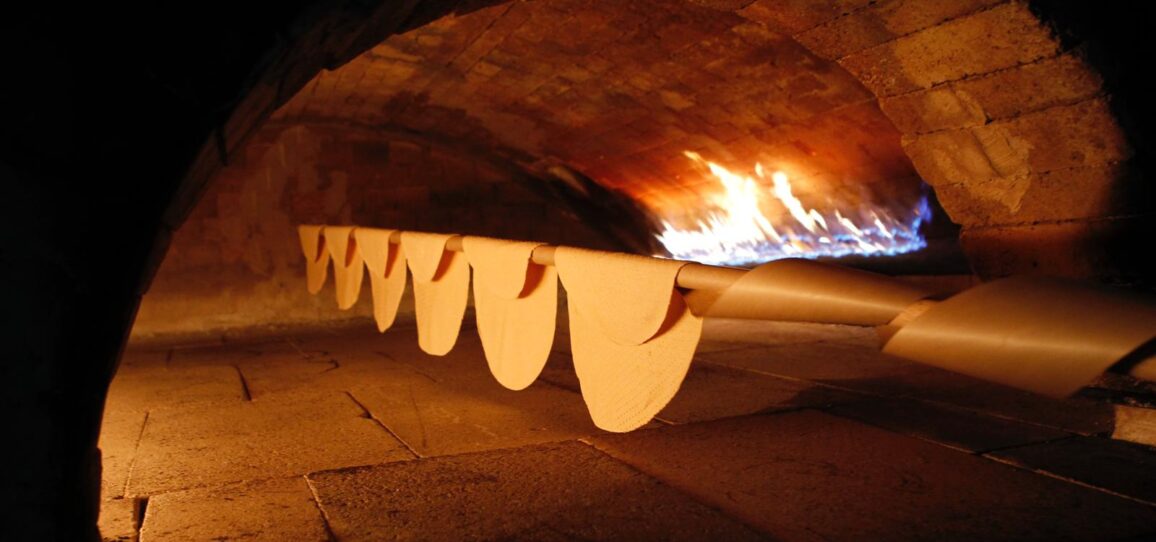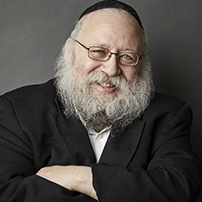
ORDER AND JEWISH EDUCATION
The Seder, as its name suggests, is an orderly ritual; so orderly, in fact, that even before we start the Seder, an outline of its steps introduces virtually every edition of the Haggadah to show us the way.
One reason for the emphasis on order in the Passover Haggadah relates to the special relationship of Passover to children. Many of the things we do on Passover night at the Seder were designed to reach the children and respond to their questions.
Indeed the basis of the obligation to recite the Haggadah is the Biblical verse that states: “You shall relate it (“v’higadita l’bincha”—the root of the word v’higadita is the same as Haggadah) to your child.” In another verse, the Torah states in relation to Passover, “If your child shall ask you …”
Many rituals of the night are intended to arouse the curiosity of children and to provoke them to ask questions. A highlight of the Seder is the asking of the “Four Questions” by the children. We are even told to start the Seder as early as possible (immediately after nightfall), so the children will not fall asleep.
Passover is thus a patently educational experience. And in education, order is extremely important. To facilitate this order, the fifteen items of the Seder are listed at the very beginning.
WE ARE ALL CHILDREN
When we speak of Passover and children, it is not only about our own children, it is about all of the Jewish people. When the Jews were liberated from Egypt they were considered to be children in the spiritual sense of the word. The Prophet Ezekiel thus characterizes the Exodus as the birth of the Jewish people. Every year, the experience of the Exodus recurs, and every year, we become children again.
The focus on children in the Seder is repeated once more when we discuss the Four Sons (actually, four children) that covers every category of child.
In truth, the characteristics of the four sons are within each of us. There is a part of us that is intellectually curious; we want to know everything (the Wise Son). There is a part of us that is rebellious (the Wicked Son). There is a part of us that is simple and sincere (the Simple Son). And there are times when we just don’t care; we are indifferent (the Son Who Cannot Ask Questions).
The Passover Seder is geared to all the children and to all of the moods and mindsets that each of us experience.
The Rebbe taught that there is even a fifth child. He or she is the one that doesn’t even come to the Seder. That child needs special attention. We must go beyond our comfort zones to seek out this child and bring him or her into our home to celebrate the Seder with us.
THE KABBALAH OF FIFTEEN
On a more spiritual and mystical level, the Rebbe explains that the fifteen items listed here have the numerical value of the first two letters of G-d’s name, the letters Yud and Hei. These two letters represent the Divine attributes of Chochma—conceptual knowledge— and Binah—analytical knowledge.
The hint here is that, although Passover in general and Matzah in particular are expressive of a faith that transcends knowledge, nevertheless, the message of the Seder is that this faith must be translated into knowledge.
his theme is echoed in the very name, Passover Seder. Passover connotes transcendence; going beyond the realm of logic. Seder, on the other hand, means “order.” The challenge of Passover is to take the transcendent and introduce it into the orderly realm and system of logic.
THE RESPONSE TO THE WISE SON’S CHALLENGE
Indeed, this tension between transcendence and knowledge is at the heart of the question posed by the Wise Son. He asks: “What are these testimonies (Eidos, or symbolic rituals), statutes (Chukim or suprarational commandments) and judgments (Mishpatim or rational commandments) that G-d commanded you?”
His question, according to the teachings of Chassidus, is a deep one. He is not just asking about the rituals of Passover. He is really asking:
Why do you make distinctions between commandments and categorize them? Why do you differentiate between the commandments that are suprarational (Chukim) and the other symbolic and logical ones? Are they not all equally G-d’s will? Should they not all be performed with an equal submissiveness that defies logic? Do we need to have them explained rationally?
The answer the Haggadah gives him is also profound:
“Tell him all the laws of Passover.” The word Passover connotes transcendence, a “passing over” of all the parameters of logic, and yet there are well-established laws associated with Passover. In Hebrew the laws are called halachos, which can also be rendered as “pathways.” Even the most suprarational and transcendent laws must be channeled to travel through the pathways of our minds. The most spiritual and G-dly commandments must find expression within all of our faculties.
The Fifteen steps of the Seder—which represent the intellectual faculties of Chochma and Binah—are the pathways by which we can reconcile the conflict between transcendence and structured rational thought.
UNLOCKING THE ENERGIES OF FREEDOM
Synthesis of the transcendent with the logical is the key to unlocking the profound energies of freedom unleashed during the first Passover. One of my goals for this book is to provide the reader with a greater understanding of the spiritual power of this dichotomy – so that we can unlock a deeper spiritual understanding of the Seder and the meaning of Passover. The proper synthesis of these two opposite forces will enable us to break the boundaries of the present exile and usher in the period of true and complete Redemption through Moshiach


